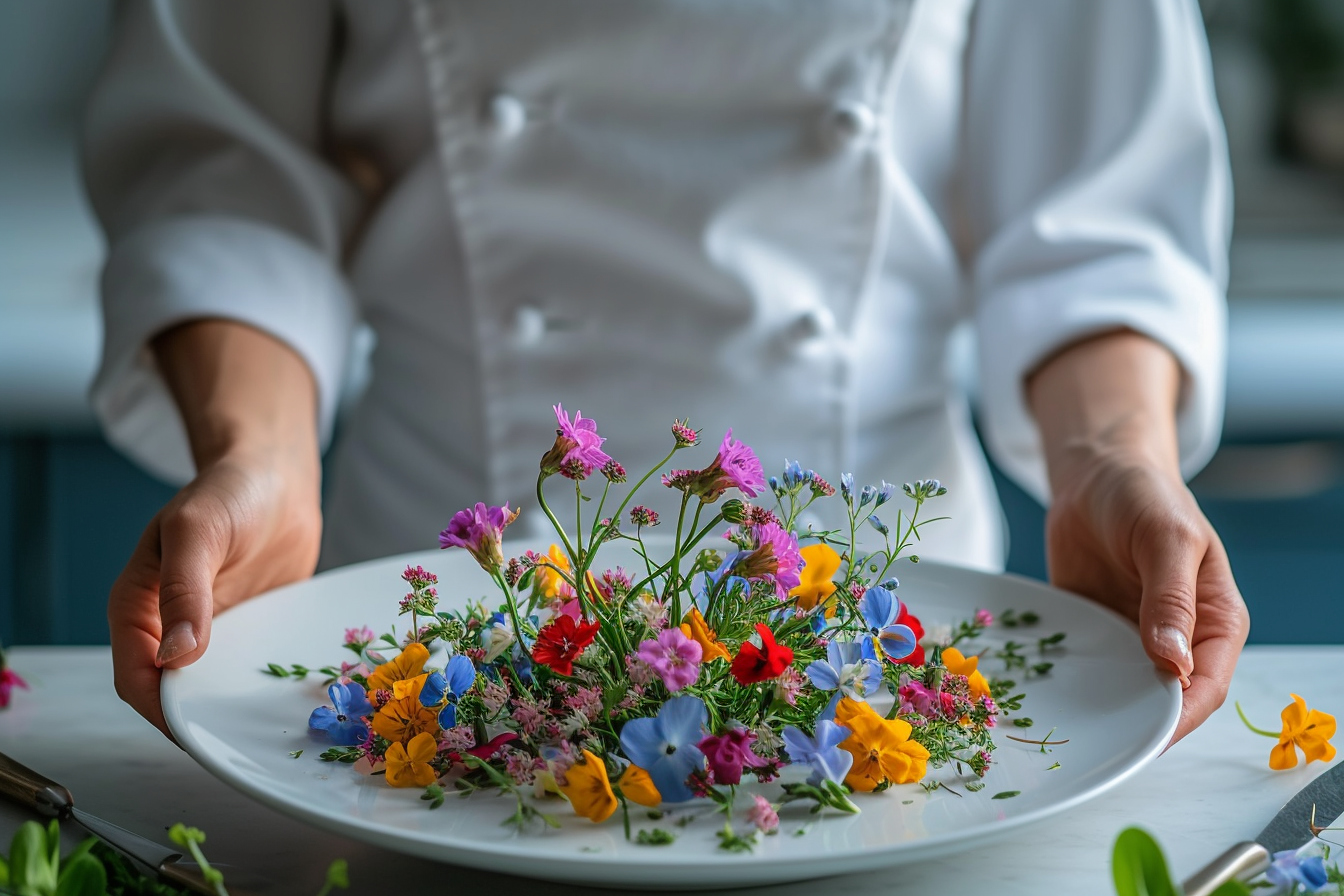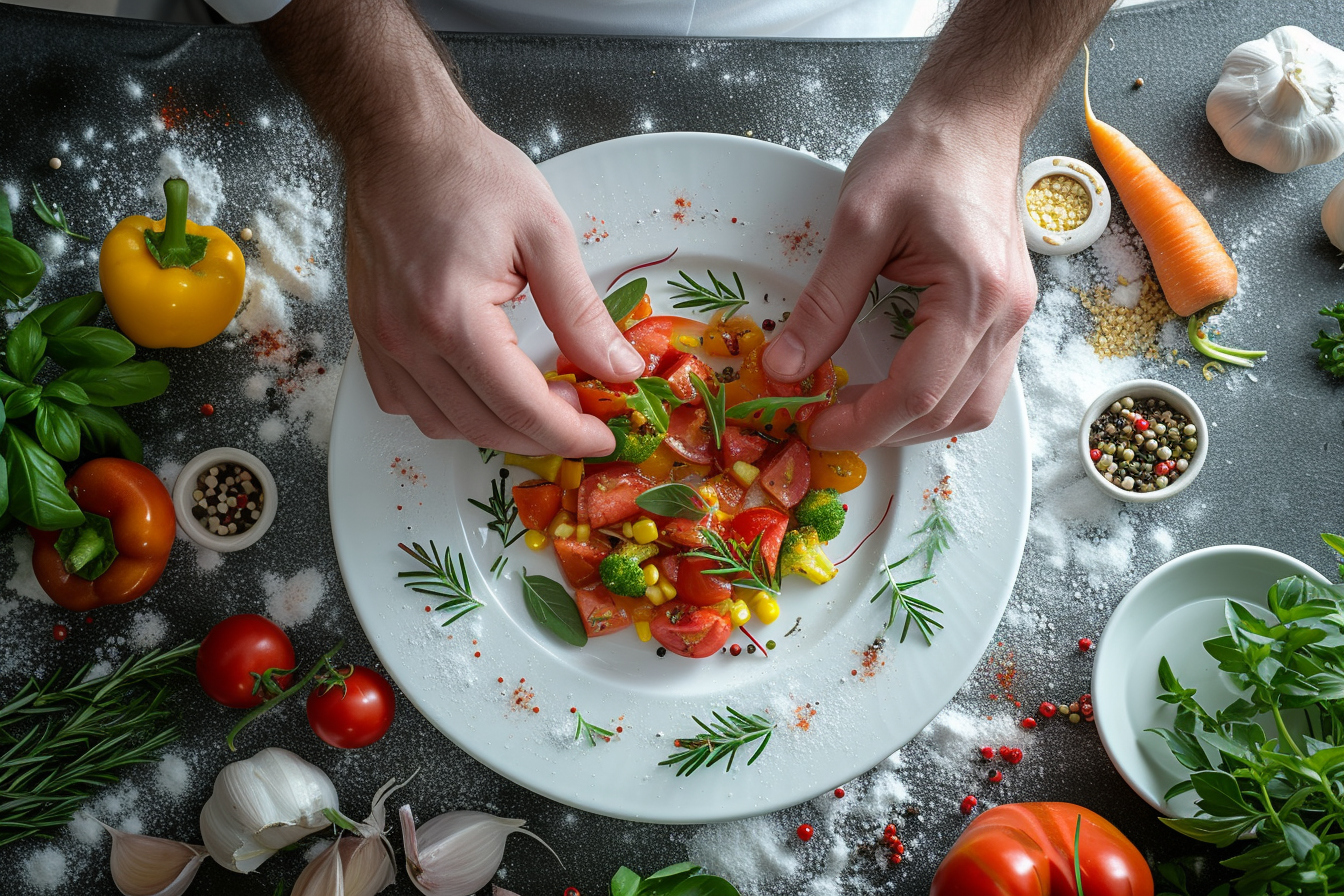First impressions matter, especially in the culinary world. Before a single flavor unfolds on the palate, the eyes send a powerful message to the brain about what is to come. The careful art of plate presentation is not just about superficial aesthetics; it’s a crucial element that complements the sensory experience of dining. By understanding and applying effective plate presentation techniques, chefs and food enthusiasts can elevate their dishes beyond mere sustenance, transforming them into a feast for the eyes.
The basics of plating: color, composition, and contrast
Starting with a solid foundation is essential in plate presentation, and that foundation consists of color, composition, and contrast. A well-plated dish uses color to create an immediate visual impact. This involves choosing a palette that enhances the natural colors of the food. Fresh herbs, edible flowers, and vibrant sauces can inject pops of color that draw the eye and excite the senses.
Composition refers to the arrangement of food on the plate. Chefs often abide by the rule of odd numbers, finding that three, five, or seven components can create a more visually pleasing display than even numbers. Moreover, considering the balance and flow of a plate’s composition will guide the diner’s eye through the dish, while also making it easy to eat.
Contrast can be created through textures, colors, and flavors. Crisp elements paired with smooth purées, dark ingredients placed against light backgrounds, and alternating tastes ensures that every bite is dynamic and stimulating.
Techniques to perfect your plating
Embrace White Space: A cluttered plate can overwhelm, whereas deliberate empty space on the plate highlights the food’s elegance and simplicity. Chefs liken plate rims to a frame, using them to encase their edible artwork. However, the ‘less is more’ approach doesn’t mean being overly minimalistic; it’s about striking the right balance.
Create Height and Depth: Building vertical height on the plate can transform a flat and uninteresting presentation into a dramatic showcase. But this is not to suggest everything should be piled high. Instead, smart layering of ingredients adds a three-dimensional aspect that is visually engaging and suggests a story behind the construction of the dish.
Sauce with a Purpose: A sauce should complement, not drown the main ingredients. Using it artfully can be as simple as a well-placed drizzle or a dotting method around the plate’s perimeter. Some chefs prefer to sauce the plate before arranging the food on top to create a layered effect that surprises as the dish is explored.
Texture Talk: Introducing a variety of textures takes a plate from flat to fascinating. A crunchy element with something smooth, or adding a garnish that provides a textual contrast can intrigue the diner and make each mouthful interesting.
Advanced plating techniques
Brush and Swipe: The brush stroke technique involves swiping sauce or purée across the plate with a pastry brush or the back of a spoon. This can be a striking way to add color and movement to a dish.
Precision Tweezing: Fine dining often uses tweezers for placing small, delicate items on the plate. This level of precision ensures that microgreens, flowers, or intricate garnishes are placed with intention, creating an ordered chaos that seems both natural and artful.
Circular Presentations: Employing circular molds to layer and present food in a clean and organized way has become a popular technique. It creates a streamlined look and can be a statement of elegance on the plate.
Personalizing your presentation

Reflecting The Dish’s Identity: The presentation should tell a story, matching the dish’s concept or theme. Rustic dishes can be served on wooden boards or slates to emphasize their earthy origins, while sleek, modern creations may fare better on geometrically shaped plates.
Seasonal Sensibility: Aligning the dish’s presentation with the seasons can instigate a sense of harmony. Light and bright presentations suit the sprightliness of spring and summer, whereas warmer, richer presentations fit the comfort sought in autumn and winter.
Cultural Context: The cultural background of a dish can shape its presentation. Using traditional ceramics or unique utensils pays homage to the dish’s heritage and can transport the diner to the meal’s geographical inspirations.
Plate selection: the canvas matters
Opt for the Right Plate: The plate itself is the canvas for the chef’s artistry. Choosing the appropriate size, color, and shape is paramount. White plates are classic as they provide a stark contrast and make colors pop. However, dark or vividly colored plates can accentuate specific dishes and add a modern twist.
Play with Texture and Material: Beyond color, the texture of the plate can add an extra layer of interest. Rough, stone-like plates can impart an elemental feel, while sleek, glossy plates can convey sophistication. The plate’s material, from porcelain to glass to wood, can complement the food’s texture and enhance its overall appeal.
Mind the Table Setting: The plate does not exist in isolation but as part of a broader table setting. Ensuring that cutlery, glassware, and linens harmonize with the plate presentation creates a cohesive and considered dining experience that appeals to all senses.
In crafting a visually appealing dish, the attention to detail cannot be overstated. Each element, from the ingredients to the plate, must be chosen and placed with intention. Mastery of plate presentation techniques not only captivates the diner’s interest but amplifies their overall gastronomic enjoyment. Through creativity, precision, and a deep understanding of the visual language of food, one can elevate the eating experience from mere consumption to a thrilling journey of discovery and delight. By honing these skills, chefs and home cooks alike can ensure that before the first bite is taken, the eyes have already feasted.











